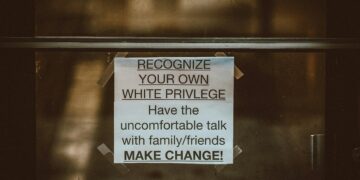Table of Contents
Introduction: The Revolving Door of Defeat
For the first fifteen years of my career as a primary care physician, I felt like I was running in place.
I practiced what I believed to be good, evidence-based medicine.
I meticulously tracked lab values, adjusted prescriptions, and delivered what I thought were empowering lectures on diet and exercise.
Yet, I was trapped in a clinical version of Groundhog Day.
The same patients with chronic conditions—type 2 diabetes, hypertension, heart failure—would cycle through my office month after month, their numbers barely budging.
I saw their polite nods of agreement, but their A1C levels and blood pressure readings told a different story: a story of stagnation and, ultimately, defeat.
Mine and theirs.
My frustration reached its peak with the realization that the conventional, disease-centric model of care was fundamentally broken.
It felt like trying to repair a complex, precision machine by repeatedly polishing a single, tarnished gear, all while willfully ignoring that the entire apparatus was rusting away in a damp, corrosive basement.
I was treating A1C numbers, not people.
I was managing symptoms, not addressing the root causes of illness.
This personal frustration wasn’t just a feeling; it was a reflection of a well-documented systemic failure.
The evidence is overwhelming that the non-medical factors in a person’s life—their social and economic conditions—can account for as much as 80% of their health outcomes.1
In fact, these Social Determinants of Health (SDOH) have a greater influence on a person’s well-being and longevity than their genetics or even their access to healthcare services.2
The case that shattered my complacency was that of Mr. Henderson.
He was a kind, soft-spoken man in his late 50s with stubbornly uncontrolled type 2 diabetes.
His A1C was consistently above 10%, and I had exhausted my clinical playbook.
I’d tried different medications, referred him to a dietitian, and had numerous conversations about the importance of healthy eating and regular blood sugar monitoring.
In my notes, I attributed his poor outcomes to medication non-adherence and a lack of dietary discipline.
I was, in my own mind, doing everything right.
He was the one failing.
The truth came out not through my clinical assessment, but through a chance encounter with a hospital social worker who was following up on one of his frequent emergency room visits for hyperglycemia.
She discovered what my questions never had: Mr. Henderson had been evicted from his apartment two months prior.
He was living out of his car.
His “diet” consisted of whatever he could afford at convenience stores and fast-food restaurants because he had no kitchen, no refrigerator, and no stable place to prepare or store the healthy foods I so casually prescribed.
My clinical advice wasn’t just ineffective; it was absurd.
I had been diligently trying to control a patient’s blood pressure while he was struggling with homelessness, a fact I never knew because I never thought to ask.1
I was treating his chart, not his life.
That failure was a turning point, forcing me to question the very foundations of my practice.
To move forward, I first had to understand the language of this new landscape.
Social Determinants of Health, as defined by the World Health Organization (WHO) and the Centers for Disease Control and Prevention (CDC), are the conditions in the environments where people are born, live, learn, work, play, worship, and age that affect a wide range of health, functioning, and quality-of-life outcomes and risks.3
These are not abstract concepts; they are the tangible realities of life.
Healthy People 2030, the nation’s public health agenda, groups them into five core domains: Economic Stability, Education Access and Quality, Health Care Access and Quality, Neighborhood and Built Environment, and Social and Community Context.2
These domains represent the water, soil, and air that determine whether a person can truly be healthy.
My work with Mr. Henderson had taught me a painful lesson: ignoring these domains wasn’t just an oversight; it was a form of clinical malpractice.
The Epiphany: Seeing the Forest for the Trees
My professional crisis sent me searching for answers far outside the traditional confines of medical journals.
I delved into public health, sociology, and economics, but the true paradigm shift came from an entirely unexpected field: systems ecology.
It was here, in the study of how complex natural systems function and sustain themselves, that I found a powerful new way to understand my patients and my purpose.
The central analogy that reframed my entire worldview is this: A patient is not an isolated tree to be diagnosed and treated.
A patient is a tree living within a complex forest ecosystem. A single tree’s health—its ability to grow, to resist disease, to flourish—is fundamentally inseparable from the quality of the soil it’s rooted in, the availability of water and sunlight, the climate it must endure, and its connection to the vast, hidden network of life that thrives beneath the ground.
This analogy became my new operational framework:
- The Tree: The individual patient, with their unique biology, genetics, and clinical presentation.
- The Soil: The patient’s foundational environment—their housing, their economic stability, their neighborhood. Is the soil rich and nurturing, or is it toxic and barren?
- The Climate: The broader social and community context—the prevailing social norms, the presence of discrimination or violence, the strength of their support systems. Is the climate temperate and supportive, or is it harsh and isolating?
- The Mycelial Network (The “Wood Wide Web”): The unseen, underground web of fungal filaments that connects trees, allowing them to share resources, water, and even information.8 This is the perfect metaphor for a patient’s connection to community resources, social services, information, and support systems that determine their resilience in times of stress.
This ecological model immediately exposed the profound flaw in my previous approach.
Traditional medicine, much like early, simplistic models of forestry, often employs a reductionist method.
It isolates a single “diseased” part—a failing organ, a high lab value, a browning leaf—and treats it in isolation from the whole system.11
We prescribe a pill for the high blood pressure without ever asking why the patient is so stressed.
We lecture about diet for diabetes without analyzing the “food desert” they may live in.
We see the symptom but miss the system.
Systems thinking, in contrast, teaches that the properties of a complex system—like a healthy patient or a thriving forest—are emergent.
They arise from the intricate web of interactions between all the parts and cannot be understood by simply analyzing those parts in isolation.12
The health of the forest is far more than the sum of its individual trees.
My failure with Mr. Henderson was a classic failure of reductionism.
I was meticulously tending to his “leaves” (his diabetes) while his “roots” were withering in the toxic soil of homelessness and food insecurity.
The forest ecosystem analogy provided a holistic framework that forced a shift in perspective.
It demanded that I move beyond a simple, linear cause-and-effect model and embrace the complex, interconnected reality of my patients’ lives.14
This wasn’t just a nice metaphor; it was a new blueprint for practicing medicine.
Pillar 1: The Soil and the Roots – Assessing the Foundational Environment
In the forest ecosystem model of health, the soil is everything.
It is the substrate from which all life springs.
A tree planted in depleted, toxic, or unstable soil cannot thrive, no matter how genetically robust it may be.
In human terms, this “soil” is composed of the most fundamental Social Determinants of Health: a person’s economic stability and their neighborhood and built environment.
To begin to understand a patient’s health, I learned I had to first assess the ground beneath their feet.
Nutrient Scarcity (Food Insecurity)
The most immediate “nutrient” for human health is food.
Yet for millions, access to nutritious, affordable food is a daily struggle.
This isn’t just about hunger; it’s about the impossibility of following clinical advice in the face of resource deprivation.
I had lectured Mr. Henderson about a diet rich in fresh vegetables and lean proteins, a prescription that was not only useless but borderline cruel given his circumstances.
For patients with conditions like type 2 diabetes, food insecurity makes a mockery of disease management; they simply cannot control their A1C if they cannot afford or access healthy groceries.1
This link is so direct and powerful that the Centers for Medicare & Medicaid Services (CMS) now mandates screening for food insecurity for all inpatient hospital admissions, recognizing it as a vital sign as critical as blood pressure.4
Screening tools developed by states like North Carolina have prioritized this domain, adapting validated, two-question screens like the “Hunger Vital Sign” to quickly and efficiently identify this need.18
Assessing for food insecurity is the first step in understanding whether a patient has access to the basic fuel required for health.
Unstable Ground (Housing Insecurity and Utilities)
A tree cannot grow strong roots in shifting sand.
Likewise, a person cannot build a healthy life on a foundation of housing instability.
The lack of safe, stable housing is a profound and escalating health crisis.
As I saw with Mr. Henderson, it cascades into every other aspect of life, from diet to medication adherence to mental health.
Patients struggling with homelessness or housing insecurity are far more likely to have repeat emergency room visits, frequent hospitalizations, and difficulty managing chronic conditions.1
This is why premier screening tools like the Protocol for Responding to and Assessing Patients’ Assets, Risks, and Experiences (PRAPARE) and the CMS Accountable Health Communities Health-Related Social Needs (AHC-HRSN) tool ask direct, powerful questions about housing: “In the past 12 months, has the lack of transportation kept you from medical appointments, meetings, work, or from getting things needed for daily living?” and “Are you worried about losing your housing?”.18
The answers are potent predictors of health status.
This domain also includes utility insecurity—the inability to pay for heat, electricity, or clean water—which is another critical indicator of an unstable and unhealthy home environment.4
Housing is not adjacent to healthcare; it is healthcare.
A prescription is a piece of paper if a patient has no safe place to store their medication or no stable address to receive follow-up care.
The Local Terrain (Transportation and Neighborhood Safety)
The immediate environment surrounding a tree—the slope of the land, its exposure to wind, its proximity to other life—dictates its growth.
For a patient, this local terrain is their neighborhood and their ability to navigate it.
Transportation barriers are a primary and often invisible reason for missed appointments, medication non-adherence, and social isolation.19
The AHC-HRSN tool correctly identifies transportation needs as one of its five core domains for screening.20
Beyond just getting from point A to point B, the very nature of the neighborhood is a powerful determinant of health.
Factors like community safety, exposure to violence, and the presence of environmental toxins like polluted air and water directly impact health outcomes.2
A patient’s zip code has become a more reliable predictor of their life expectancy than their genetic code.
The “built environment” dictates their ability to exercise safely, to access grocery stores with healthy food, and to feel secure in their own homes.
It is the literal landscape in which their health journey—or their decline—unfolds.
This focus on the foundational environment reveals a crucial truth.
In medicine, we are trained to think of things like smoking, a high-fat diet, or lack of exercise as modifiable “risk factors.” We see them as poor choices that a patient makes.
But the data on SDOH forces a radical reframing.
These are often not choices at all; they are the consequences of an environment.
“Lack of physical activity” is not a choice when the neighborhood park is controlled by gangs or the sidewalks are crumbling.
“Poor diet” is not a choice when the only food source within walking distance is a convenience store selling processed snacks.
These social determinants function less like individual risk factors and more like the fundamental operating system on which a person’s health behaviors and choices are forced to R.N. You cannot install “healthy lifestyle” software on a corrupted, incompatible, or broken operating system.
The goal, therefore, must shift.
It is not enough to simply educate the patient—to try and force the software to R.N. We must first work to repair the operating system.
We have to improve the soil.
Pillar 2: The Mycelial Network – Tools to Reveal the Unseen Connections
In a forest, the most vital work happens out of sight.
Beneath the soil lies a vast, intricate network of fungal threads—a mycelial network, colloquially known as the “Wood Wide Web”—that connects the roots of individual trees, even those of different species.9
This subterranean network is a biological superhighway, transporting water, carbon, and critical nutrients between trees.
It’s a communication system, sending warning signals about insect attacks or drought from one tree to another, allowing the entire forest to mount a collective defense.8
This hidden web is what transforms a simple collection of individual trees into a resilient, interconnected, and cooperative ecosystem.
This is the perfect analogy for the systems and tools we use to conduct SDOH assessment.
A patient’s struggles with housing, food, or transportation are often just as invisible to the clinician as the mycelial network is to a person walking through the woods.
SDOH screening tools, and the technology that supports them, are our means of making these invisible, life-shaping factors visible.
They are the instruments that allow us to map the hidden connections and understand the true context of our patients’ lives.
They are the communication highway for a more holistic, integrated model of care.
Mapping the Network: An Overview of Screening Tools
For decades, if a clinician asked about social needs at all, it was done in an ad-hoc, unsystematic Way. The modern SDOH movement is defined by the shift toward using standardized, validated screening tools to collect structured data that can be analyzed, tracked, and acted upon at both the individual and population levels.1
While there is no single, universally mandated screening tool, several evidence-based instruments have emerged as leaders in the field, each with its own strengths and focus.21
- PRAPARE (Protocol for Responding to and Assessing Patients’ Assets, Risks, and Experiences): Developed by the National Association of Community Health Centers (NACHC) and its partners, PRAPARE is one of the most comprehensive tools available. Its 15 core questions and 5 optional ones cover a wide range of domains, including personal characteristics (race, ethnicity), family and home life, financial resources, and social and emotional health. It is designed to be administered by clinical or non-clinical staff, or self-administered by the patient, and its availability in over 30 languages makes it highly accessible. Its key strength lies in its robust design for community health centers and its focus on creating structured data that can be easily integrated into Electronic Health Records (EHRs).24
- AHC-HRSN (Accountable Health Communities Health-Related Social Needs) Screening Tool: This tool was developed by the Centers for Medicare & Medicaid Services (CMS) as part of its ambitious Accountable Health Communities Model. It is a more focused, 10-question self-administered screening tool (with 16 supplemental questions) that centers on five core, actionable domains: housing instability, food insecurity, transportation problems, utility help needs, and interpersonal safety.20 Its direct alignment with CMS priorities and its tight focus on needs that can often be addressed by community service referrals make it a powerful instrument, particularly within large health systems and for inpatient screening mandates.24
- The EveryONE Project Toolkit: Created by the American Academy of Family Physicians (AAFP), this tool is specifically designed with the primary care workflow in mind. The short form includes 11 questions covering key domains like financial strain, food access, housing, transportation, and stress. It can be self-administered or administered by staff and is paired with resources like the Neighborhood Navigator to help connect patients with local services. Its focus on practicality within a busy family medicine practice makes it a highly valuable option for outpatient settings.24
The development and validation of these tools represent a monumental step forward.
They provide a common language and a standardized methodology for what was once an invisible and informal process.
To help clinicians and administrators navigate this landscape, the following table provides a comparative overview of these leading instruments.
This is not just an academic exercise; it is a practical guide for the first step of implementation: choosing the right tool to begin mapping the health of your own patient-forest.
| Tool Name | Developed By | Key Domains Covered | Number of Questions | Administration | Key Feature |
| PRAPARE | NACHC & Partners | Comprehensive (15+ domains including personal characteristics, family/home, money/resources, social/emotional health) | 15 core, 5 optional | Staff- or self-administered | Designed for community health centers; strong data integration focus; available in 30+ languages.24 |
| AHC-HRSN | CMS | 5 Core (housing, food, transportation, utilities, interpersonal safety) + supplemental | 10 core, 16 supplemental | Self-administered | Aligned with CMS initiatives; focused on actionable needs with community service links; mandated for inpatient screening.4 |
| The EveryONE Project | AAFP | 11 domains (finances, food, housing, transportation, stress, safety, etc.) | 11 (short form) | Staff- or self-administered | Tailored for primary care workflows; includes a resource navigator to facilitate action.24 |
Integrating the Data Stream: The Role of Technology
A map is only useful if it can be read, shared, and updated.
Technology is the critical enabler that transforms SDOH screening from a static checklist into a dynamic, integrated data ecosystem.
It is what allows the “mycelial network” to not just connect two trees, but to reveal the health of the entire forest over time.
This technological integration happens at multiple levels.
At the point of care, health systems are leveraging digital check-in processes and patient portals to collect SDOH data before a visit or to allow patients to update their information continuously as their life circumstances change.27
This provides clinicians with real-time insights without adding significant time to the clinical encounter itself.
The most crucial step is the integration of this data into the Electronic Health Record (EHR).
This makes SDOH information an official, longitudinal part of the patient’s medical story.
To standardize this documentation, the healthcare system uses the International Classification of Diseases, 10th Revision (ICD-10) “Z codes” (Z55-Z65).
These are specific diagnostic codes for “persons with potential health hazards related to socioeconomic and psychosocial circumstances,” covering issues like problems with education, employment, housing, and finances.1
Using Z codes allows a practice to not only track an individual patient’s needs but also to run reports and quantify the social challenges facing their entire patient population, which can then inform the development of new resources or community partnerships.1
Looking forward, the technological frontier involves even more sophisticated methods.
Researchers are using Natural Language Processing (NLP), a form of artificial intelligence, to analyze unstructured clinical notes—the free-text narratives written by doctors and nurses—to automatically identify and extract mentions of SDOH factors that might not have been captured in a formal screening.28
On a macro level, government agencies like the Agency for Healthcare Research and Quality (AHRQ) are creating massive, publicly available
SDOH databases.
These resources compile data from multiple federal sources and link them by geography (county, ZIP code, census tract), allowing researchers and policymakers to analyze the intersection of social conditions and health outcomes on a grand scale.29
Technology, therefore, is the loom that weaves individual threads of data into a comprehensive tapestry of population health.
It makes the invisible visible, the unstructured structured, and the anecdotal quantifiable.
It is the essential infrastructure of the mycelial network.
Pillar 3: Forest Management – From Assessment to Action
Mapping the forest is one thing; managing it responsibly is another entirely.
Once you have the tools to see the unseen—to know that a patient is hungry, or that their housing is unstable—you are confronted with an immense practical and ethical challenge.
This is the work of “responsible forest management.” It requires moving beyond simple assessment to thoughtful, effective, and ethical action.
It is not enough to identify the struggling trees; you must learn how to intervene wisely, to nurture the ecosystem without inadvertently causing more harm.
The Forester’s Dilemma: The Ethics of Knowing
The single greatest barrier to the widespread adoption of SDOH screening, cited repeatedly by clinicians on the front lines, is a profound ethical concern: the fear of asking about problems they feel powerless to solve.21
To screen a patient and uncover a desperate need for food, housing, or safety, and then to have no resources or referral pathways to offer, is to create a uniquely painful situation.
It generates “potential harm for the patient, and frustration and burnout for the physician”.31
This is the forester’s dilemma.
The consensus among medical ethicists and pioneering practitioners is clear and stark: screening for social needs without first equipping the practice to address those needs is not just ineffective, it is “unethical”.21
This reality fundamentally reshapes the implementation process.
It dictates that the first step is not to turn on a screening tool in the EHR.
The first step is to build the “response” part of the system.
Before you ask a patient if they are hungry, you must know the name, address, and operating hours of every food bank in your community.
Before you ask about housing instability, you must have a direct line to local housing assistance programs.
The clinical question must be inextricably linked to a community solution.
To do otherwise is to open a wound you have no capacity to heal.
Clearing the Underbrush: Overcoming Implementation Barriers
Even with the best intentions, the path to implementing a robust SDOH program is thick with underbrush.
These are not minor inconveniences; they are significant systemic barriers that can derail the entire effort.
For a clinical team, it often feels like being asked to take on “just one more thing” in an already overburdened day.21
Integrating screening requires rethinking established workflows, training staff for new roles, and managing the change process, which can be disruptive and met with resistance.17
Success often hinges on securing buy-in from the top.
Without dedicated clinic leadership that champions the initiative and provides the necessary resources, programs are likely to falter.17
A designated
“clinical champion”—a respected physician, nurse, or administrator who drives the project—is often essential to shepherd the practice through the change.33
Furthermore, the external environment is often as challenging as the internal one.
The very community-based organizations that are the targets for referral can be unstable, with precarious funding, byzantine eligibility requirements, or long waiting lists.17
This is particularly acute for smaller practices and those serving safety-net communities, which face the greatest resource constraints both internally and in the communities they serve.32
Given these complexities, there is no “one size fits all” implementation strategy.17
The most successful organizations approach it not as a top-down mandate but as a process of iterative learning.
They use quality improvement methodologies like
Plan-Do-Study-Act (PDSA) cycles to test new workflows on a small scale, learn from what works and what doesn’t, and gradually refine a system that is tailored to their specific staff, patient population, and community context.17
The Rangers and Navigators: Building a Support Ecosystem
The solution to the forester’s dilemma and the key to overcoming these implementation barriers lies in a single, transformative concept: the team.
The physician cannot and should not be a “one-stop shop for social support”.1
The burden is too great, and the required expertise is too different from clinical training.
The most effective and sustainable SDOH programs are built on an interdisciplinary team-based approach.21
This team includes roles like care coordinators, patient navigators, community health workers (CHWs), and social workers.21
These individuals are the “forest rangers” of the healthcare ecosystem.
They are the specialists who bridge the vast gap between a need identified in a clinical setting and a solution delivered in the community.
Evidence clearly shows that simply handing a patient a brochure or a phone number is largely ineffective.
Patients, who are often already overwhelmed by their health and life circumstances, need active assistance to navigate the complex and often fragmented social services sector.
This is the work of the navigator.17
A stellar example of this model in action is the program developed by UNC Health.
They implemented a system-wide approach that integrated SDOH screening directly into their EHR across 92 primary care practices.
But they didn’t stop there.
They established a dedicated community health team staffed with navigators and CHWs.
When a patient screens positive for a need, a referral is sent to this team.
The team then works directly with the patient, connecting them to local resources using a shared support portal called NCCARE360, which allows for closed-loop referrals and follow-up.35
This reveals one of the most critical lessons in the entire field of SDOH implementation.
The navigator or community health worker is not a luxury or an add-on; they are the lynchpin that makes the entire system functional.
The process starts with identifying a need through screening.
We then recognize our ethical duty to act on that need.
But a gap remains—the clinician lacks the time and specialized knowledge, and the patient lacks the bandwidth or trust to make the connection.
This is the “last mile” problem of social care.
The navigator is the role specifically designed to solve this problem.
They possess the community knowledge, the dedicated time, and often the shared lived experience to build trust and guide the patient through the process of accessing help.
They are the essential enzyme that catalyzes the reaction between clinical identification and community resolution.
In our forest analogy, they are the specialized organisms that physically transport nutrients through the mycelial network, ensuring that resources from a source tree actually reach the tree in need.
Their role is what makes the network’s promise of mutual support a reality.
Pillar 4: The Patient’s Perspective – Life Inside the Ecosystem
To be a truly effective “forest manager,” a clinician must do more than map the terrain and deploy resources.
They must strive to understand the lived experience of the trees themselves.
What does it feel like to be rooted in this particular soil, under this particular climate? What does it feel like to be asked these deeply personal and often painful questions about your life? Shifting the perspective from the provider to the patient reveals the delicate, human dynamics that are the true heart of any successful SDOH program.
Trust and Rapport: The Climate for Disclosure
The data from patients is unequivocal.
The single most important factor determining their comfort and willingness to share sensitive information about their social needs is an established, trusting relationship with their healthcare provider.36
SDOH screening cannot be a transactional, data-extraction process.
It must be relational.
Patients are far more willing to open up if they perceive the clinical encounter as a “safe environment” and feel that their clinician is empathetic, respectful, non-judgmental, and genuinely “cares for them as a whole person”.36
Critically, they need to understand
why these non-medical questions are being asked.
When a provider takes a moment to explain that understanding a patient’s housing situation or access to food helps them provide better, more personalized care, it transforms the nature of the interaction from an intrusive interrogation into a collaborative partnership.37
This underscores the irreplaceable value of relational continuity in healthcare.
The “climate” of the clinical encounter—the ambient feeling of safety, respect, and compassion—is what allows for honest and healing disclosure.
Fears and Barriers: Toxins in the Soil
Just as a healthy climate can foster openness, a climate of fear and mistrust can be toxic, poisoning the soil and preventing any meaningful exchange.
Patients harbor significant and valid fears about SDOH screening.
Many feel a deep sense of stigma or shame about their struggles, worrying that they will be judged or viewed as a “failure” by their provider.36
Confidentiality is a paramount concern.
Patients worry that their sensitive information, once entered into an EHR, could be spread to the wrong people, leading to discrimination, a change in their standard of care, or the loss of services.36
The most profound barrier, however, is the fear of punitive consequences.
Patients, particularly those in marginalized communities, express palpable fear that disclosing domestic violence, housing instability, or food insecurity could trigger a referral to child protective services or, for immigrants, to immigration authorities.36
This fear of having their family separated or their status jeopardized is so powerful that it will understandably lead them to conceal information, no matter how much they trust their individual doctor.
These fears are not irrational.
They are the rational response to a lifetime of experience with systemic harm and institutional mistrust.
They are the toxins in the soil that inhibit growth.
Any health system embarking on SDOH screening must acknowledge these fears and design its processes to be explicitly trauma-informed, with crystal-clear policies on data privacy and mandatory reporting that are communicated transparently to patients.
This leads to a difficult and paradoxical conclusion about implementation.
The entire purpose of SDOH screening is to identify and assist the most vulnerable populations—those with the most significant social needs.19
Yet, the evidence reveals a troubling pattern: the systems designed to help may be least effective at reaching those who need them most.
One study found that clinical facilities located in zip codes with the highest percentage of SDOH needs actually had
lower odds of screening their patients.32
Smaller, under-resourced, safety-net clinics—the very places serving the most vulnerable—consistently lag in adopting these new practices due to a lack of staff and funding.32
Simultaneously, the patients with the most acute needs are often the ones who face the greatest barriers to being screened.
They may have lower literacy levels, making self-administered forms difficult; they may lack reliable internet or a smartphone, precluding the use of patient portals; and they may harbor the deepest levels of mistrust and fear of judgment, making them the least likely to disclose their struggles.32
This is the central paradox of SDOH implementation.
It’s like a forester trying to survey the most drought-stricken part of the woods only to find that their soil-moisture probes don’t work in dry ground.
A universal, one-size-fits-all screening approach—for example, a mandatory questionnaire pushed to every patient’s online portal—is destined to fail the very people it is most intended to serve.
A successful, equitable strategy must be multi-modal, flexible, and human-centered.
It must meet patients where they are, offering different methods of screening (in-person interviews by trusted staff, paper forms, tablet-based surveys) and be relentlessly tailored to overcome the specific barriers faced by the most vulnerable members of the community.
Conclusion: Cultivating a Healthy Forest
I often think back to Mr. Henderson and the profound failure of my initial approach to his care.
But his story also marks the beginning of a new chapter.
After that humbling realization, our clinic completely redesigned our intake process, embedding the principles of the forest ecosystem model into our daily work.
We adopted a standardized screening tool to begin mapping our patients’ “soil.” We built partnerships with local food banks and housing authorities, creating the referral pathways of our “mycelial network.” And, most importantly, we hired a community health worker—our first “forest ranger”—whose job was to navigate that network with our patients.
A few months later, a new patient, a young single mother with uncontrolled hypertension, screened positive for high levels of food and housing insecurity.
This time, instead of just adjusting her medication and lecturing her about sodium intake, my first “prescription” was a warm handoff to our CHW.
The CHW helped her enroll in SNAP benefits and found her a spot on the waiting list for subsidized housing.
Over the next six months, as her life began to stabilize, her engagement in her own health transformed.
She started making her appointments.
She had the resources and the mental bandwidth to focus on her diet.
Her blood pressure came down more effectively than it ever would have with pills alone.
We hadn’t just treated her disease; we had helped tend to the toxic soil that was making her sick.
We had treated the whole forest.
This journey has convinced me that to truly improve the health of our communities, we must undergo a fundamental shift in our perspective.
We must stop focusing exclusively on treating sick trees and start learning how to cultivate healthy forests.
This is not a small tweak to our current system; it is a redefinition of our purpose.
It means, first, Seeing Holistically. We must abandon the limitations of a purely reductionist, biomedical model and embrace a systems-thinking mindset that recognizes the profound interconnectedness between a person’s life and their health.
Second, it means Assessing the Environment. We must move from ignoring social context to systematically and compassionately screening for Social Determinants of Health, making the invisible factors of our patients’ lives a visible and actionable part of their care.
Third, it means Building the Network. It is not enough to simply identify needs.
We must invest in the human infrastructure—the patient navigators, the community health workers, the social workers—and the technological platforms that connect our clinical settings to our community resources, creating a true ecosystem of support.
And finally, it means Fostering Trust. All of this work must be built on a foundation of trust, empathy, and respect.
We must create clinical environments where patients feel safe enough to share the complex and often painful realities of their lives.
The transition to an SDOH-informed model of care is the great work of our time.
It is challenging, it is complex, and it requires a new way of thinking, acting, and being as healthcare professionals.
But it is also a return to the deepest roots of healing.
It is about acknowledging our profound interconnectedness and accepting our shared responsibility as stewards of the entire human ecosystem.
The future of medicine and the health of our nation depend not on the next miracle drug or surgical procedure, but on our collective will to see, understand, and, finally, to tend to the forest.
Works cited
- Screening for Social Determinants of Health in Daily Practice – AAFP, accessed August 8, 2025, https://www.aafp.org/pubs/fpm/issues/2022/0300/p6.html
- Social Determinants of Health (SDOH) | About CDC, accessed August 8, 2025, https://www.cdc.gov/about/priorities/why-is-addressing-sdoh-important.html
- Social determinants of health – World Health Organization (WHO), accessed August 8, 2025, https://www.who.int/health-topics/social-determinants-of-health
- Introduction to Social Determinants of Health (SDOH) Screening Tools, accessed August 8, 2025, https://www.matrixmedicalnetwork.com/social-determinants-of-health-screening-tools/
- Social Determinants of Health – Healthy People 2030 | odphp.health.gov, accessed August 8, 2025, https://odphp.health.gov/healthypeople/priority-areas/social-determinants-health
- www.cdc.gov, accessed August 8, 2025, https://www.cdc.gov/public-health-gateway/php/about/social-determinants-of-health.html#:~:text=Overview-,Social%20determinants%20of%20health%20(SDOH)%20are%20non%2Dmedical%20factors,that%20shape%20everyday%20life%20conditions.
- Social Determinants of Health | Public Health Gateway – CDC, accessed August 8, 2025, https://www.cdc.gov/public-health-gateway/php/about/social-determinants-of-health.html
- How Can Mycorrhizal Networks Inform Sustainable Lifestyle Choices? → Question, accessed August 8, 2025, https://lifestyle.sustainability-directory.com/question/how-can-mycorrhizal-networks-inform-sustainable-lifestyle-choices/
- Underground Networking: The Amazing Connections Beneath Your Feet – National Forest Foundation, accessed August 8, 2025, https://www.nationalforests.org/blog/underground-mycorrhizal-network
- Understanding the Wood Wide Web – EcoMatcher, accessed August 8, 2025, https://www.ecomatcher.com/understanding-the-wood-wide-web/
- A Systems Thinking Approach to Designing Clinical Models and Healthcare Services – MDPI, accessed August 8, 2025, https://www.mdpi.com/2079-8954/7/1/18
- What Is Systems Thinking? | University of Phoenix, accessed August 8, 2025, https://www.phoenix.edu/articles/business/what-is-systems-thinking.html
- Complex system – Wikipedia, accessed August 8, 2025, https://en.wikipedia.org/wiki/Complex_system
- The transformative power of systems thinking in population health management, accessed August 8, 2025, https://www.wolterskluwer.com/en/expert-insights/transformative-power-systems-thinking-in-population-health-management
- Development of the Systems Thinking for Health Actions framework: a literature review and a case study, accessed August 8, 2025, https://pmc.ncbi.nlm.nih.gov/articles/PMC10030275/
- Screening tools to address social determinants of health in the United States: A systematic review, accessed August 8, 2025, https://pmc.ncbi.nlm.nih.gov/articles/PMC11036426/
- Strategies to Help Care Settings Face Barriers to SDOH Screenings, accessed August 8, 2025, https://journal.ahima.org/page/strategies-to-help-care-settings-face-barriers-to-sdoh-screenings
- Screening Questions | NCDHHS, accessed August 8, 2025, https://www.ncdhhs.gov/about/department-initiatives/healthy-opportunities/screening-questions
- Screening for Social Determinants of Health in Populations with Complex Needs: Implementation Considerations, accessed August 8, 2025, https://www.chcs.org/resource/screening-social-determinants-health-populations-complex-needs-implementation-considerations/
- The AHC Health-Related Social Needs Screening Tool – CMS, accessed August 8, 2025, https://www.cms.gov/priorities/innovation/files/worksheets/ahcm-screeningtool.pdf
- A Practical Approach to Screening for Social Determinants of Health …, accessed August 8, 2025, https://www.aafp.org/pubs/fpm/issues/2018/0500/p7.html
- Mycorrhizal network – Wikipedia, accessed August 8, 2025, https://en.wikipedia.org/wiki/Mycorrhizal_network
- Assessment and Documentation of Social Determinants of Health Among Health Care Providers: Qualitative Study – PMC, accessed August 8, 2025, https://pmc.ncbi.nlm.nih.gov/articles/PMC10365596/
- Three tools for screening for social determinants of health – AAFP, accessed August 8, 2025, https://www.aafp.org/pubs/fpm/blogs/inpractice/entry/social_determinants.html
- SDOH: Tools and Support – ASHA, accessed August 8, 2025, https://www.asha.org/practice/sdoh-tools-and-support/
- SDOH & Practice Improvement | Agency for Healthcare Research and Quality, accessed August 8, 2025, https://www.ahrq.gov/sdoh/practice-improvement.html
- 3 technology solutions that facilitate SDOH data collection within the …, accessed August 8, 2025, https://patientpoint.com/blog/technology-solutions-that-facilitate-sdoh-data-collection/
- Realizing the potential of social determinants data in EHR systems: A scoping review of approaches for screening, linkage, extraction, analysis, and interventions, accessed August 8, 2025, https://pmc.ncbi.nlm.nih.gov/articles/PMC11523026/
- SDOH Data and Analytics | Agency for Healthcare Research and Quality, accessed August 8, 2025, https://www.ahrq.gov/sdoh/data-analytics.html
- Social Determinants of Health Database | Agency for Healthcare Research and Quality, accessed August 8, 2025, https://www.ahrq.gov/sdoh/data-analytics/sdoh-data.html
- A Practical Approach to Screening for Social Determinants of Health | OHSU, accessed August 8, 2025, https://www.ohsu.edu/sites/default/files/2022-08/A%20Practical%20Approach%20to%20Screening%20for%20Social%20Determinants%20of%20Health.pdf
- Assessing Differences in Social Determinants of Health Screening Rates in a Large, Urban Safety-Net Health System – PMC, accessed August 8, 2025, https://pmc.ncbi.nlm.nih.gov/articles/PMC10624082/
- Screening for Social Determinants of Health – Hospital Systems Capacity Building Initiative, accessed August 8, 2025, https://hscb.acs4ccc.org/wp-content/uploads/2022/04/Screening-for-SDOH-Health-Assessment-Tool.pdf
- A Narrative Review on Shifting Practice and Policy Around Social Determinants of Health (SDOH) Screenings: Expanding the Role of Social Workers in Healthcare Settings in the U.S. – MDPI, accessed August 8, 2025, https://www.mdpi.com/2227-9032/13/10/1097
- System Approaches to Social Determinants of Health Screening and Intervention Innovation Summary | PSNet, accessed August 8, 2025, https://psnet.ahrq.gov/innovation/system-approaches-social-determinants-health-screening-and-intervention-innovation
- Integration of social determinants of health information within the …, accessed August 8, 2025, https://pmc.ncbi.nlm.nih.gov/articles/PMC11169979/
- Screening for SDOH: What do patients think? – Activate Care Blog, accessed August 8, 2025, https://blog.activatecare.com/screening-for-sdoh
- Yr 3_ SDOH Screening Lessons Learned Challenges and Barriers_ A Resource for Health Centers Vol. 3HRSA com gc.docx, accessed August 8, 2025, https://nhchc.org/wp-content/uploads/2023/06/SDOH-Screening-Lessons-Learned-Challenges-and-Barriers_-A-Resource-for-Health-Centers-Vol.-3_FINAL.pdf






